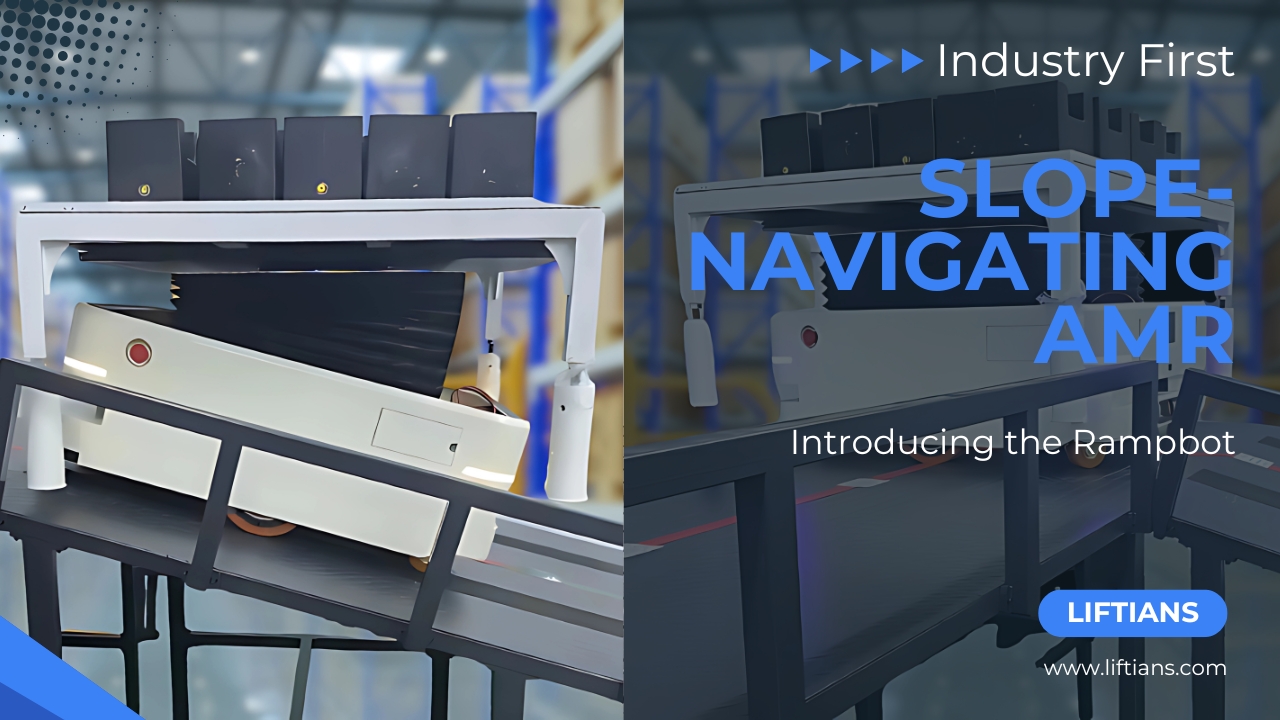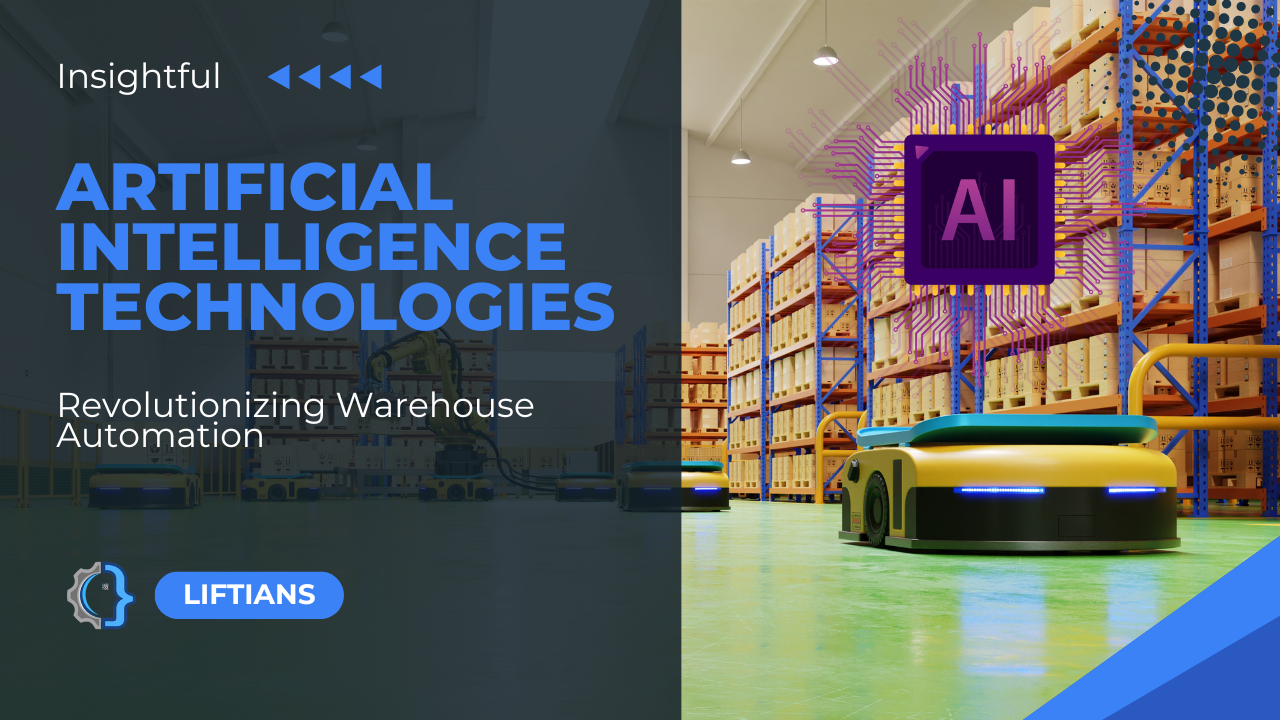The Role of AI Technologies in Revolutionizing Warehouse Automation
In the fast-paced world of supply chain management, warehouses have become more than just storage spaces—they are now pivotal hubs for inventory management, order fulfillment, and distribution. As consumer demands for efficiency, accuracy, and speed continue to rise, companies are turning to advanced technologies to keep up. Among these, Artificial Intelligence (AI) stands out as a game-changer. It is transforming traditional warehouses into smart, automated facilities. In this blog post, we'll explore how specific AI technologies are revolutionizing warehouse automation.
1. Computer Vision Enhancing Inventory Management
First and foremost, computer vision, a subset of AI that enables machines to interpret and process visual data, is making significant strides in inventory management. Equipped with cameras and advanced image recognition algorithms, computer vision systems can continuously monitor inventory levels, identify products, and detect discrepancies in real-time.
Applications:
-
Automated Inventory Tracking:
AI-powered cameras scan shelves and pallets to automatically track inventory levels, thereby reducing the need for manual stock checks.
-
Quality Control:
Computer vision systems inspect products for defects, ensuring that only high-quality items are dispatched to customers.
-
Product Identification:
AI algorithms recognize and categorize products, even when packaging or labels are damaged.
2. Robotic Process Automation (RPA) Streamlining Tasks
Moreover, Robotic Process Automation (RPA) uses AI-powered robots to automate repetitive tasks within the warehouse. These robots perform various functions with precision and speed, significantly enhancing productivity.
Applications:
-
Picking and Packing:
AI-driven robots pick items from shelves and pack them into boxes, following optimized routes to minimize time and effort.
-
Sorting:
Automated sorting systems use AI to categorize and route products to their appropriate destinations within the warehouse.
-
Material Handling:
AI-enabled robots transport goods across the warehouse, reducing the reliance on human labor for heavy lifting and moving.
3. Predictive Analytics for Demand Forecasting
In addition, predictive analytics leverages AI algorithms to analyze historical data and forecast future demand. This technology is crucial for optimizing inventory levels, minimizing stockouts, and preparing warehouses for demand fluctuations.
Applications:
-
Inventory Optimization:
By predicting future demand patterns, AI helps warehouses maintain optimal inventory levels, thus reducing carrying costs and preventing overstocking.
-
Order Fulfillment Planning:
Predictive analytics forecasts peak periods and allocates resources accordingly, ensuring timely order fulfillment even during high-demand seasons.
-
Supplier Management:
AI analyzes supplier performance and predicts potential disruptions, enabling warehouses to develop contingency plans and maintain smooth operations.
4. Natural Language Processing (NLP) Enhancing Communication
Another vital AI technology is Natural Language Processing (NLP), which enables machines to understand and respond to human language. In warehouse automation, NLP enhances communication and coordination among workers, robots, and management systems.
Applications:
-
Voice-Activated Systems:
Warehouse workers use voice commands to interact with AI systems, making it easier to retrieve information, update records, and execute tasks.
-
Chatbots:
AI-powered chatbots handle routine inquiries and provide real-time support to warehouse staff, improving efficiency and reducing the workload on human supervisors.
-
Automated Documentation:
NLP automates the generation of reports, emails, and other documentation, ensuring that communication is accurate and timely.
5. Machine Learning Optimizing Warehouse Processes
Furthermore, machine learning, a core component of AI, involves training algorithms to learn from data and improve over time. In warehouse automation, machine learning optimizes various processes, from order picking to route planning.
Applications:
-
Dynamic Slotting:
Machine learning algorithms analyze order patterns and dynamically adjust product placement within the warehouse, minimizing travel time for picking.
-
Energy Management:
AI optimizes energy consumption by learning usage patterns and adjusting lighting, heating, and cooling systems accordingly, thus reducing operational costs.
-
Maintenance Scheduling:
Predictive maintenance algorithms monitor equipment performance and predict when maintenance is needed, preventing unexpected breakdowns and prolonging machinery lifespan.
6. Autonomous Mobile Robots (AMRs) Revolutionizing Material Handling
Lastly, Autonomous Mobile Robots (AMRs) are AI-powered robots capable of navigating and performing tasks independently within the warehouse. Unlike traditional automated guided vehicles (AGVs), AMRs do not require fixed paths and can adapt to changing environments.
Applications:
-
Goods-to-Person Systems:
AMRs bring products directly to warehouse workers, reducing the time spent walking and searching for items.
-
Inventory Replenishment:
AMRs autonomously restock shelves, ensuring that inventory levels are maintained without human intervention.
-
Order Consolidation:
These robots consolidate multiple orders into a single shipment, streamlining the packing and shipping process.
Conclusion
In conclusion, the integration of AI technologies in warehouse automation is transforming operations by driving efficiency, accuracy, and scalability. From computer vision and robotic process automation to predictive analytics and autonomous mobile robots, AI enables warehouses to meet the demands of a fast-paced, ever-evolving supply chain landscape. As AI technologies continue to advance, their role in warehouse automation will only become more prominent, shaping the future of logistics and supply chain management.
By embracing these innovations, businesses can stay ahead of the competition, optimize their warehouse operations, and ultimately deliver better service to their customers.

